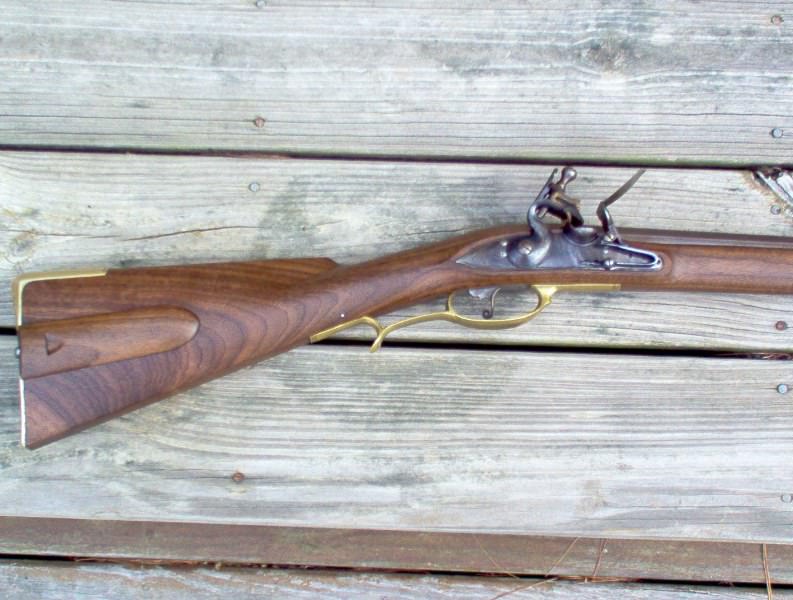54ball
62 Cal.
- Joined
- Aug 23, 2004
- Messages
- 3,116
- Reaction score
- 1,029
Nathan,
You are correct. I need to clarify.
Period writings by Batram and others such as ministers describe these Mountain People of NC, Va, swVa, and what becomes Tn as well, different. Poor is a lazy way to put it.
For some reason I'm wanting to say Adair but that may not be right.
Anyway, this was a minister, Anglican I believe traveling through either western Va or Pa. His descriptions of the women simply dressed, dressing their hair and legs with bear grease. I do believe these are the same accounts that describe how proud the Riflemen were of their backwoods dress. Leggings...hunting shirts.
Another minister account is of a family who's children were naked.
Another account and do believe this was in the Kentucky exploration (longhunter) era a party come across a group bearded "Dunkers".
Batram describes men shirtless working fields with a single brace holding the breeches. The women wearing only a simple chemise or shift.....simple one piece garment. Of course this would be considered underwear in Philadelphia.
Batram goes on to describe that the people in the valley seem to be more wealthy (of a higher class) than the people in the mountains.
Interestingly this same sentiment is mentioned by "Mama York" In 1941's Sergeant York. "I don't know why people on the bottom look down on people from the top. Always been that way I guess."
One thing that seems to be consistent is that the homesteads were somewhat neglected but they would have a fine rifle and a fine horse.
Ministers, especially Anglican tended to be from the aristocracy. Batram was a Naturalist from Philadelphia so their view of these people may have been somewhat biased.
One thing for all to consider...wealth is relative. These people owned or were hacking out their ownership of land and property. It takes a measure of means to move....to travel, to relocate. Wether it would be; for lack of a better term, cash or more likely labor and the fruits of it enabled these people to have the means to move and settle. That equals wealth.
Compared to the world stage of the time of the American Revolution, The Virginians, Pennsylvanians or what we consider the Rifle Culture, were the healthiest most well fed people on the planet.
This was a culture shock to the British (mainly of whom came from abject poverty from places like London),The Hessions (from the feudal serf class of the Germanic States), were amazed at the wealth of the American Colonists. They were perplexed that people who enjoy such wealth would rebel.
I'll close this with David Crockett. Crockett's father was a veteran of Kings Mountain. Crockett left home at an early age. Through his labor and skill his first rifle is alleged to be a fine York rifle that he later sold to set up housekeeping when he married his first wife.
You are correct. I need to clarify.
Period writings by Batram and others such as ministers describe these Mountain People of NC, Va, swVa, and what becomes Tn as well, different. Poor is a lazy way to put it.
For some reason I'm wanting to say Adair but that may not be right.
Anyway, this was a minister, Anglican I believe traveling through either western Va or Pa. His descriptions of the women simply dressed, dressing their hair and legs with bear grease. I do believe these are the same accounts that describe how proud the Riflemen were of their backwoods dress. Leggings...hunting shirts.
Another minister account is of a family who's children were naked.
Another account and do believe this was in the Kentucky exploration (longhunter) era a party come across a group bearded "Dunkers".
Batram describes men shirtless working fields with a single brace holding the breeches. The women wearing only a simple chemise or shift.....simple one piece garment. Of course this would be considered underwear in Philadelphia.
Batram goes on to describe that the people in the valley seem to be more wealthy (of a higher class) than the people in the mountains.
Interestingly this same sentiment is mentioned by "Mama York" In 1941's Sergeant York. "I don't know why people on the bottom look down on people from the top. Always been that way I guess."
One thing that seems to be consistent is that the homesteads were somewhat neglected but they would have a fine rifle and a fine horse.
Ministers, especially Anglican tended to be from the aristocracy. Batram was a Naturalist from Philadelphia so their view of these people may have been somewhat biased.
One thing for all to consider...wealth is relative. These people owned or were hacking out their ownership of land and property. It takes a measure of means to move....to travel, to relocate. Wether it would be; for lack of a better term, cash or more likely labor and the fruits of it enabled these people to have the means to move and settle. That equals wealth.
Compared to the world stage of the time of the American Revolution, The Virginians, Pennsylvanians or what we consider the Rifle Culture, were the healthiest most well fed people on the planet.
This was a culture shock to the British (mainly of whom came from abject poverty from places like London),The Hessions (from the feudal serf class of the Germanic States), were amazed at the wealth of the American Colonists. They were perplexed that people who enjoy such wealth would rebel.
I'll close this with David Crockett. Crockett's father was a veteran of Kings Mountain. Crockett left home at an early age. Through his labor and skill his first rifle is alleged to be a fine York rifle that he later sold to set up housekeeping when he married his first wife.







